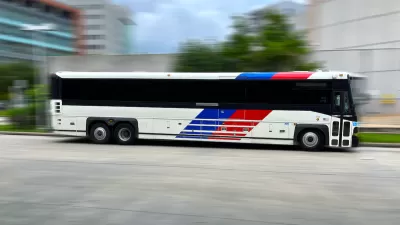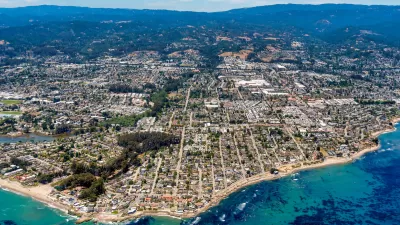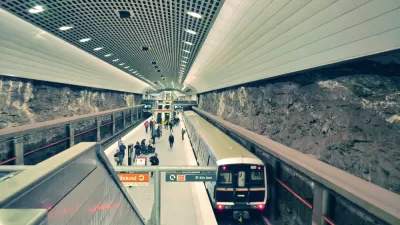A comprehensive list of public transit expansions and new lines that opened in 2024, and projections for 2025.

In a piece for The Transport Politic, Yonah Freemark outlines transit projects that began operating in U.S. cities in 2024 and looks ahead to projects that will open in 2025.
According to Freemark, “Cities throughout the United States opened very little transit in 2024, adding just 29 kilometers (18 miles) of light rail and no new metro rail service. Though Seattle added some notable new expansions—including an extension north to Lynnwood of its successful light rail route and the first phase of a second line to Bellevue—the only other US light rail expansions were short additions in Los Angeles and Phoenix.” However, other types of transit such as bus rapid transit (BRT) lines opened in Indianapolis, Madison, and Seattle.
Substantial light rail or streetcar projects are coming to some cities. “In 2025, Kansas City will more than double the length of its Main Street streetcar line. Los Angeles will add new mileage to its A Line, reaching Pomona; south of LA, Orange County will open a new streetcar line. In Phoenix, the South Central Corridor will create a branch for the city’s light rail route. Finally, in Seattle, the city’s Line 2 will extend north to Redmond and west from Bellevue into downtown Seattle.” Los Angeles, Dallas, the San Francisco Bay Area, and Portland, Oregon currently have the longest light rail networks in the nation.
See the source article for a full list of transit projects that opened in 2024 or are slated to start running in 2025.
FULL STORY: Transit Expansion in the United States: A 2024 Roundup and a Look Ahead to 2025

Alabama: Trump Terminates Settlements for Black Communities Harmed By Raw Sewage
Trump deemed the landmark civil rights agreement “illegal DEI and environmental justice policy.”

Planetizen Federal Action Tracker
A weekly monitor of how Trump’s orders and actions are impacting planners and planning in America.

The 120 Year Old Tiny Home Villages That Sheltered San Francisco’s Earthquake Refugees
More than a century ago, San Francisco mobilized to house thousands of residents displaced by the 1906 earthquake. Could their strategy offer a model for the present?

LA’s Tree Emergency Goes Beyond Vandalism
After a vandal destroyed dozens of downtown LA trees, Mayor Karen Bass vowed to replace them. Days later, she slashed the city’s tree budget.

Sacramento Leads Nation With Bus-Mounted Bike Lane Enforcement Cameras
The city is the first to use its bus-mounted traffic enforcement system to cite drivers who park or drive in bike lanes.

Seattle Voters Approve Social Housing Referendum
Voters approved a corporate tax to fund the city’s housing authority despite an opposition campaign funded by Amazon and Microsoft.
Urban Design for Planners 1: Software Tools
This six-course series explores essential urban design concepts using open source software and equips planners with the tools they need to participate fully in the urban design process.
Planning for Universal Design
Learn the tools for implementing Universal Design in planning regulations.
Ada County Highway District
Clanton & Associates, Inc.
Jessamine County Fiscal Court
Institute for Housing and Urban Development Studies (IHS)
City of Grandview
Harvard GSD Executive Education
Toledo-Lucas County Plan Commissions
Salt Lake City
NYU Wagner Graduate School of Public Service





























